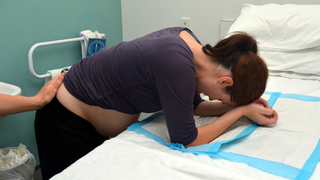- Insulin helps glucose enter your cells to create energy.
- Without insulin, your body thinks it’s starving and burns fat instead.
- This process produces ketones, which make the blood more acidic.
Why Does Ketoacidosis Happen?
Several triggers and conditions cause ketoacidosis. They’re often related to how insulin and metabolism interact. Here are the main reasons:1. Insufficient Insulin or Irregular Treatment
- Missing doses or not receiving enough insulin means glucose can’t enter the cells.
- This is one of the most common causes in Indian hospital studies.
2. Infections and Illness
- Common infections, such as respiratory or urinary tract infections, stress your body.
- That stress raises hormone levels, which counteract insulin, leading to DKA.
3. New or Undiagnosed Diabetes
- Some people first learn they have diabetes when they develop ketoacidosis, especially in type 1
4. Severe Dehydration or Electrolyte Imbalance
- Lack of fluids worsens the condition and accelerates acid buildup.
Recognising the Symptoms
You must know the warning signs. Ketoacidosis can develop quickly, so early detection is key. Look out for:- Excessive thirst and dry mouth
- Frequent urination
- Nausea, vomiting, and abdominal pain
- Weakness or fatigue
- Fast, deep breathing (called Kussmaul breathing)
- Confusion or irritability
How Ketoacidosis Is Diagnosed
Medical professionals use a combination of signs, tests, and a patient's medical history to diagnose conditions. Here’s what typically happens:- Blood sugar test: Very high glucose levels confirm hyperglycaemia.
- Ketone measurement: Presence of ketones in blood or urine.
- Arterial blood gas (ABG): To check pH levels and acidity.
- Electrolytes & hydration status: To assess dehydration and mineral balance.
Treatment and Management
Once diagnosed, ketoacidosis must be treated promptly. The aim is to reverse the acid build-up, stabilise glucose, restore hydration, and prevent complications. Here's what usually happens:- Fluid replacement: To correct dehydration and dilute glucose and ketones.
- Insulin therapy: To allow glucose into cells and reduce ketone production.
- Electrolyte correction: Restore the balance of sodium, potassium, and other essential electrolytes.
- Treat the underlying cause: For example, antibiotics if there’s an infection.
Why Ketoacidosis Is Dangerous
Understanding risks helps you act faster and prevent worse outcomes:- High acid levels can damage organs (kidneys, brain, heart).
- Without treatment, it may lead to coma or even death.
- Mortality rates in DKA India studies are significant—up to around 10%, especially with delayed treatment.
Prevention: How to Lower the Risk
You can reduce the chances of ketoacidosis by following these steps:- Adhere strictly to prescribed insulin regimens.
- Monitor your blood sugar levels regularly and respond to any unusual spikes.
- Stay alert for infections—get treatment early.
- Stay well-hydrated, even during illness.
- Maintain regular check-ups and educate yourself about warning signs.
Ketoacidosis in the Indian Context
In India, awareness and early access to care are vital. Some factors impacting DKA cases here include:- Delayed diagnosis of diabetes in many regions.
- High rates of infections can precipitate DKA.
- Irregular access to insulin or monitoring tools.
Ketoacidosis is a serious, life-threatening complication of diabetes. It occurs when there’s too little insulin, causing your body to burn fat instead of glucose, and produce acid by-products called ketones. Infections, missed insulin doses, new diabetes diagnosis, and dehydration are major causes. If untreated, ketoacidosis can harm vital organs and even lead to death. However, with prompt diagnosis, treatment involving fluids, insulin, and electrolyte balance, and by managing underlying triggers, it’s treatable. Prevention through medication adherence, early infection care, hydration, and regular monitoring is key—especially in the Indian context.
You’re not alone in your journey when trying to conceive. Join our supportive community to connect with others, share experiences, and find encouragement every step of the way.
FAQs on Understanding Diabetic Ketoacidosis: What It Is, Why It Happens, and How to Handle It
- Can ketoacidosis happen in people without diabetes?
Yes, though rare. Some cases of euglycaemic ketoacidosis occur when ketone levels rise even with normal blood sugar—for example, due to prolonged fasting or certain medications. - Is ketoacidosis the same as ketosis?
No. Ketosis is a milder and controlled state (like during fasting), while ketoacidosis is uncontrolled, dangerous, and involves high acid levels in the blood. - Are children in India often diagnosed with ketoacidosis?
Yes. Many children with type 1 diabetes in India first present with DKA. Symptoms often include dehydration, vomiting, and rapid breathing. - How long does treatment for ketoacidosis usually take?
It varies, but many hospital stays last around a week, depending on the severity of the condition, the patient's response to treatment, and whether the underlying cause (e.g., an infection) is resolved.










